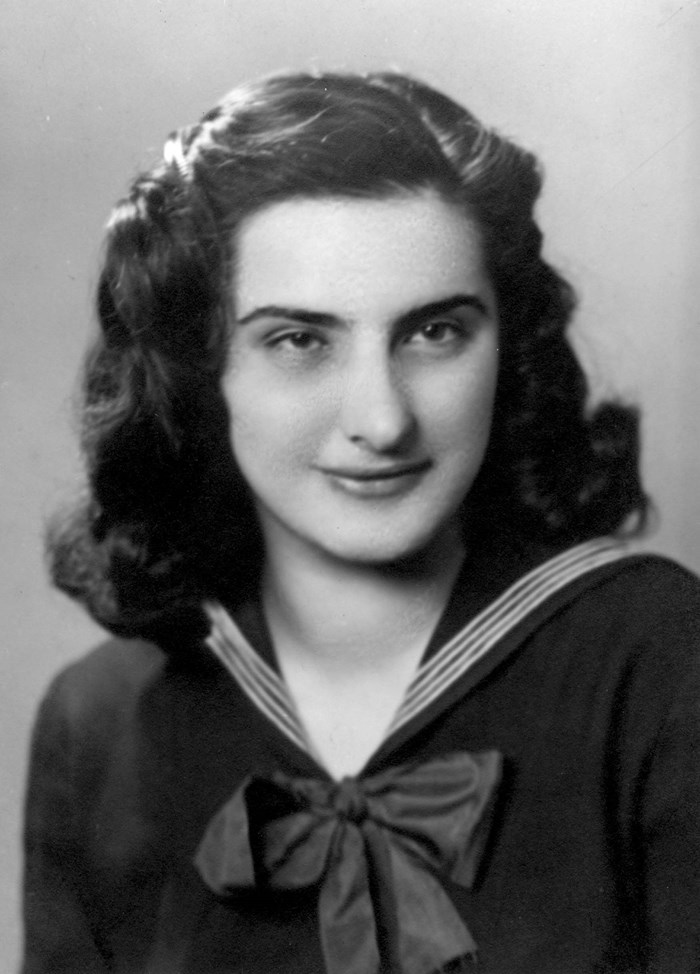
Magda Stroe came from a mixed family. Her mother was Hungarian, and father – Romanian. The family lived in Kolozsvár (Cluj-Napoca), in northern Transylvania in Romania. The region came under Hungarian rule in summer 1940 to reward the country for its alliance with Germany. Over 160,000 Jews lived in that area, including Magda’s friend, Hanna Hamburg (later Kende). They were classmates at the Calvinist High School for Girls and remained close after Hanna transferred to a Jewish school.
The Hungarian government introduced race laws that excluded Jews from participation in the country’s social, professional, and political spheres. A labor service requirement for Jewish men to serve in Hungarian army battalions began in 1940. In summer 1941, Hungarian authorities deported about 20,000 Jews across the border to German-occupied Ukraine where they were murdered. However, the Hungarian regime refused to organize full-fledged deportations of the country’s entire Jewish population. Therefore, Jews, such as Hanna Hamburg, continued to live in their hometowns, albeit with restrictions and under oppression.
The situation changed on March 19, 1944, when German forces entered and occupied Hungary. Starting in April, Jews were required to wear the yellow star. In May, the German authorities ordered Jews into ghettos. Hanna visited her non-Jewish friend to bid her farewell. Magda, the same age as Hanna (19 years old), gave her Jewish friend her own identity documents (a birth certificate, and a certificate of baptism) in order to enable Hanna’s escape from Kolozsvár.
After giving away her personal documents, Magda rarely left her home. It was very dangerous to be outside without identification papers and she did not request new ones to replace her allegedly “lost” documents. When she did have to leave her house, Magda took her matriculation diploma with her. Despite having papers and being a non-Jew, Magda was terrified that she would be stopped by a Hungarian gendarme or a German soldier.
With the help of Magda’s papers, Hanna fled to Budapest and survived the Holocaust. She avoided the fate of the Jews in Kolozsvár, who were deported to Auschwitz between May and June 1944.
Soviet and Romanian forces liberated Kolozsvár in October 1944. A Jewish community emerged, composed mainly of refugees. In 1946, Hanna returned for a brief visit to Kolozsvár, as did many survivors who wished to see if their loved ones came back. In 1956, at the time of the Hungarian Revolution against the Stalinist government, Hanna moved to France where she worked as a psychologist. Magda moved from then Romanian Cluj-Napoca to Bucharest and became a philosopher.
On January 2, 2003, Yad Vashem recognized Magda Stroe as Righteous Among the Nations.
